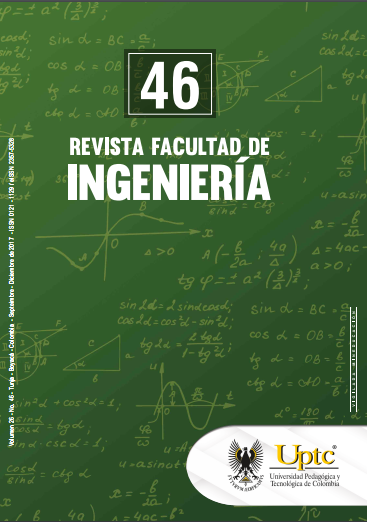Microstructural evolution during austempering of a ASTM A-532 CLASS III type high chromium white cast iron undergoing abrasive wear

Abstract
This paper studies the influence of variables such as holding temperatures and times during austempering of High Chromium White Cast Iron (HCWCI), with the following chemical composition: Cr 25 %, C 3 %, Si 0.47 %, Mn 0.74 % and Mo 1.02 %. The aim of the austempering was to modify the percentage of retained austenite and its correlation to abrasive wear resistance under different conditions.Microhardness tests, SEM-EDS and XRD were performed to determine mechanical properties, chemical composition, and type of carbides and microstructures present, respectively. The tests complied with the ASTM G-65 standard. Results showed that the best performance against abrasion was achieved for austempering at 450 ºC with holding time of 6 hours.Keywords
Austempered, Retained austenite, Abrasive wear, High chromium white cast iron, Chromium carbides
References
- M. Col, F. GülKoc, H. Öktem, and D. Kir, “The role of boron content in high alloy white cast iron (Ni-Hard 4) on microstructure, mechanical properties and wear resistance,” Wear, vol. 348-349, pp 158-165, Feb. 2016. DOI: http://doi.org/10.1016/j.wear.2015.12.007. DOI: https://doi.org/10.1016/j.wear.2015.12.007
- K. Kusumoto, K. Shimizu, X. yaer, Y. Zhang, Y. Ota, and J. Ito, “Abrasive wear characteristics of Fe-2C-5Cr-5Mo-5W-5Nb multicomponent white cast iron,” Wear, vol. 376-377, pp 22-29, Apr. 2017. DOI: http://doi.org/10.1016/j.wear.2017.01.096. DOI: https://doi.org/10.1016/j.wear.2017.01.096
- K. D. Tozetti, E. Albertin, and C. Scandian, “Abrasive size and load effects on the wear of a 19.9 % chromium and 2.9 % carbon cast iron,” Wear, vol. 376-377, pp 46-53, Apr. 2017. DOI: http://doi.org/10.1016/j.wear.2017.02.008. DOI: https://doi.org/10.1016/j.wear.2017.02.008
- V. Heino, M. Kallio, K. Valtonen, and V. T. Kuokkala, “The role of microstructure in high stress abrasion of white cast irons,” Wear, In press. Mayo 2017. DOI: http://doi.org/10.1016/j.wear.2017.04.029. DOI: https://doi.org/10.1016/j.wear.2017.04.029
- American Society for Testing and Metals. Standard Specification for Abrasion Resistant Cast Irons: ASTM G-532,
- J. P. Holman, Transferencia de calor, 8 Ed. McGraw Hill, 1998.
- ASM Handbook, Vol. 1, Properties and Selection: Irons, Steels, and High-Performance Alloys, 1993.
- ASM Handbook, vol. 18, Friction, Lubrication, and Wear Technology, 1992.
- American Society for Testing and Metals. Standard Test Method for Measuring Abrasion Using the Dry Sand/Rubber Wheel Apparatus: ASTM G-65.
- S. D. Carpenter, and D. Carpenter, “X-ray diffraction study of M7C3 carbide within a high chromium white iron,” Materials Letters, vol. 57 (28), pp. 4456-4459, Oct. 2003. DOI: http://doi.org/10.1016/S0167-577X(03)00342-2. DOI: https://doi.org/10.1016/S0167-577X(03)00342-2
- C. Fan, M. C. Chen, C.M. Chang, and W. Wu, “Microstructure change caused by (Cr, Fe)23C6 carbides in high chromium Fe–Cr–C hardfacing alloys,” Surf. Coat. Technology, vol. 201 (3-4), pp. 908-912, Oct. 2006. DOI: http://doi.org/10.1016/j.surfcoat.2006.01.010. DOI: https://doi.org/10.1016/j.surfcoat.2006.01.010
- Ö. N. Doğan, J. A. Hawk, and G. LairdII, “Solidification Structure and Abrasion Resistance of High Chromium White Irons,” Metall. Mater. Trans. A., vol. 28A, pp 1315-1328, Jun. 1997. DOI: http://doi.org/10.1007/s11661-997-0267-3. DOI: https://doi.org/10.1007/s11661-997-0267-3
- A. E. Karantzalis, A. Lekatou, and E. Diavat, “Effect of Destabilization. Heat Treatments on the Microstructure of High-Chromium Cast Iron: A Microscopy Examination Approach,” J. Mater. Eng. Perform., vol 18 (8), pp 1078-1085, Nov. 2009. DOI: http://doi.org/10.1007/s11665-009-9353-6. DOI: https://doi.org/10.1007/s11665-009-9353-6
- S. K. Hann, and J. D.Gates, “A transformation toughening white cast iron,” J. Mater. Sci., vol. 32 (5), pp. 1249-1259, Mar. 1997. DOI: http://doi.org/10.1023/A:1018544204267. DOI: https://doi.org/10.1023/A:1018544204267
- D. Li, L. Liu, Y. Zhang, Ch. Ye, X. Ren, Y. Yang, and Q. Yang, “Phase diagram calculation of high chromium cast irons and influence of its chemical composition,” Materials and Design., vol. 30 (2), pp. 340-345, Feb. 2009. DOI: http://doi.org/10.1016/j.matdes.2008.04.061. DOI: https://doi.org/10.1016/j.matdes.2008.04.061
- A. Bedolla-Jacuide, L. Arias, and B. Hernández, “Kinetics of Secondary Carbides Precipitation in a High-Chromium White Iron,” J. Mater. Eng. Perform, vol. 12 (4), pp. 371-382, Aug. 2003. DOI: http://doi.org/10.1361/105994903770342881. DOI: https://doi.org/10.1361/105994903770342881
- A. E. Karantzalis, A. Lekatou, and H. Mavros, “Microstructural Modifications of As-Cast High-Chromium White Iron by Heat Treatment,” J. Mater. Eng. Perform., vol. 18 (2), pp. 174-181, Mar. 2009. DOI: http://doi.org/10.1007/s11665-008-9285-6. DOI: https://doi.org/10.1007/s11665-008-9285-6
- A. Akhbarizadeh, A. Shafyei, and M.A. Golozar, “Effects of cryogenic treatment on wear behavior of D6 tool steel,” Materials and Design, vol. 30 (8), pp. 3259-3264, Sep. 2009. DOI: http://doi.org/10.1016/j.matdes.2008.11.016. DOI: https://doi.org/10.1016/j.matdes.2008.11.016
- Y. P. Wang, D. Y. Li, L. Parent, and H. Tian, “Performances of hybrid high-entropy high-Cr cast irons during sliding wear and air-jet solid-particle erosion,” Wear 301, pp. 390-397, 2013. DOI: http://doi.org/10.1016/j.wear.2012.12.045. DOI: https://doi.org/10.1016/j.wear.2012.12.045
- R. Blickensderfer, J.H. Tylczak. and G. Laird II, “Spalling of high chromium white cast in balls subjected to repetitive impact,” Wear of Metals, vol. 1, pp. 175-183, Jan. 1989.
Downloads
Download data is not yet available.